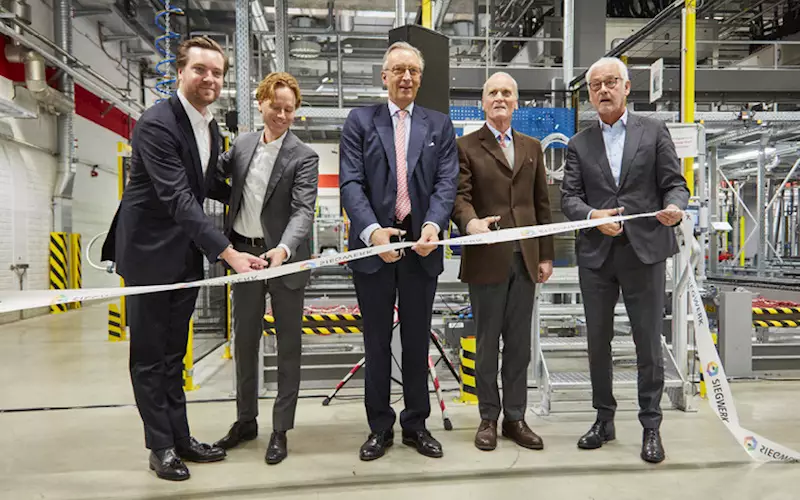Siegwerk opens Europe’s largest automated facility for printing inks
Ink major Siegwerk has opened a new facility for the production of inks at its headquarters in Siegburg on 11 December 2019. The new Blending Center is now the largest fully automated production facility for printing inks in Europe.
16 Dec 2019 | By Aultrin Vijay
Herbert Forker, CEO at Siegwerk, said, “The opening of this facility is an unparalleled milestone for us. It is a key component in our global production network a big step forward.”
The company claims that the new blending facility is equipped with state-of-the-art technology, serving as an example for the networked Industry 4.0.
“The topics of digitisation and automation play a key role. We must also consider, at different levels, which opportunities we take, the direction in which we want to develop, and where exactly we want to invest. The new system is one of the responses to this,” Forker added.
A trial operation of the new Blending Center is underway and it will soon be running at full capacity, according to a press note shared with PrintWeek.
The note stated that the new blending facility complies with all current legal requirements and offers consistent product quality through reliable, standardised processes, in addition to solid delivery performance with expanded capacities. “Compared to the previous production setup, the new process is even more efficient and transparent, clearly increasing the site's productivity. Additionally, the new facility will enable safer and cleaner production and support Siegwerk's endeavours for increased sustainability,” the note said.
Siegwerk now consists of 16 base ink production facilities, the Centers of Excellence, where basic products are manufactured worldwide according to a uniform standard, as well as 50 blending and dosing facilities (Blending Centers), where ink solutions are finished and adapted to individual customer requirements.
“With the new blending facility, we are automating our production of customer inks, in order to be able to meet the growing demand for consistent and high quality more easily,” Forker concluded.











 See All
See All